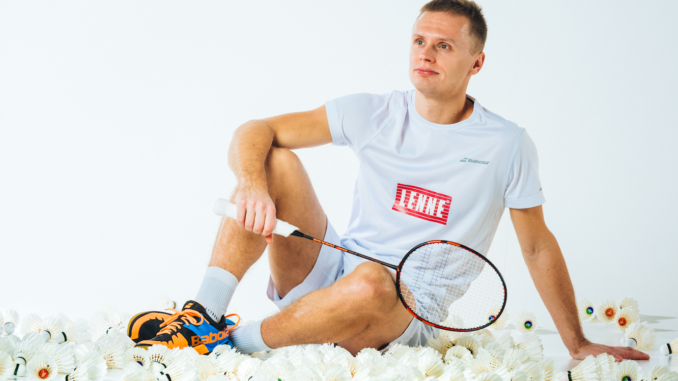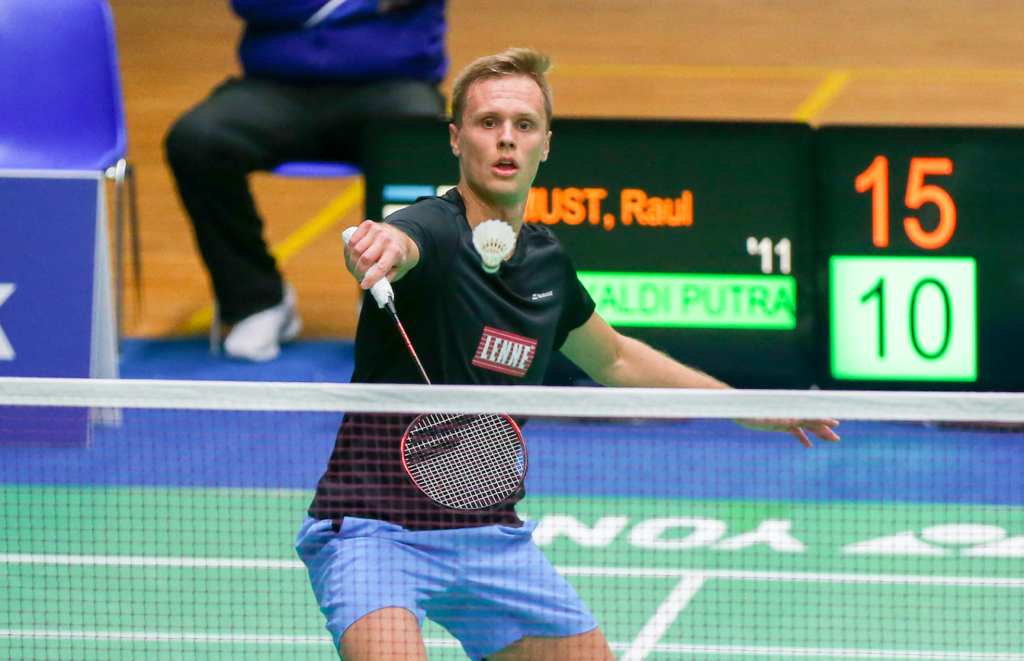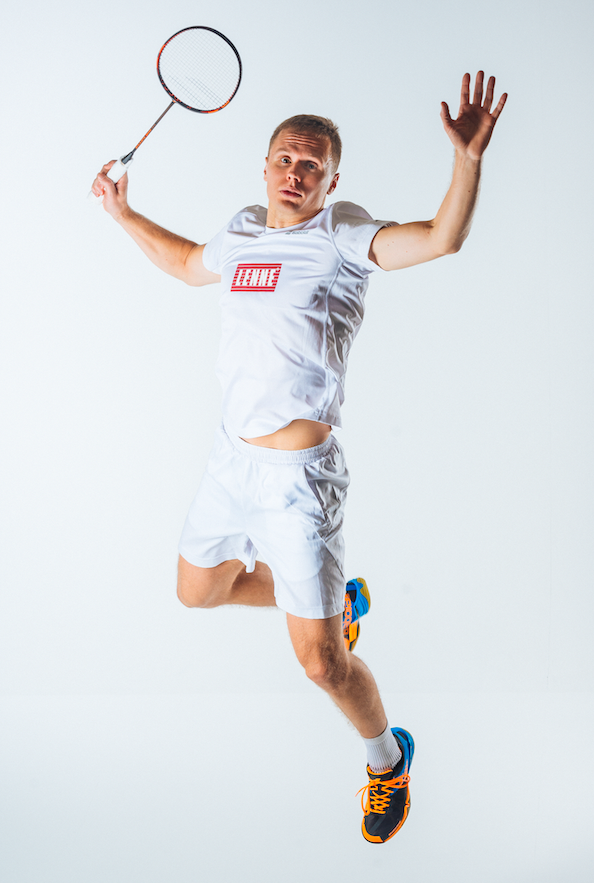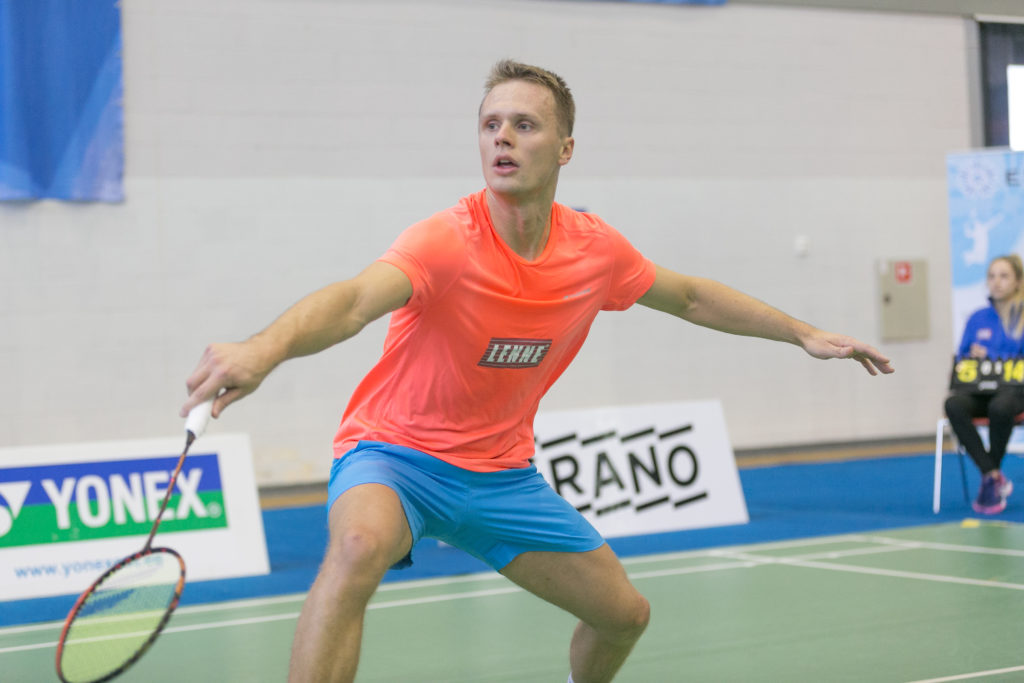
Raul Must is a top badminton player, who stumbled upon his career because badminton happened to be played in his neighbourhood. By now, Raul has been to the Olympics three times and his career is far from over.
Raul, how did you end up as a badminton player?
It was totally by chance. I moved to the Lasnamäe city district with my parents and when I was eight, I decided to join a badminton practice. It was close by, the coaches were nice, and I was immediately wowed by the game itself. As far as I can remember, badminton practice was just a fun place to hang out at first.
Who was your first coach? What did you like most about the game, and what brought you back to the court each season?
My first coach was Alfred Kivisaar – he had a way of making practice exciting. We had a lot of full body workouts as well as special training (badminton skills). I remember being 10 or 12 and going to change after practice, and being so soaked I looked like I had taken a shower with my clothes on. Karl Kivinurm (badminton player, a few years older than Raul; later won the Estonian Championships in doubles play – ed.) said, “You see, at least one kid has worked hard.” When I look at kids today, I can’t see anyone sweating that much in practice. I don’t know if boys just don’t sweat anymore or if the practice is too easy. I’m not sure why I kept going back, but I do know that my will to achieve something grew every year.

In juniors, you were already a promising player, and had good results at international competitions. Tell us more about the time before you turned 16 and headed to Denmark.
I know that this time (ages 12-15) was difficult for me. I had “friends” who invited me to smoke with them in alleyways. Training wasn’t popular at all and I can’t deny skipping a few sessions. But only a few. My upbringing made me continue and not give up. In that sense, my father was tough, he didn’t let me fool around. I didn’t always succeed at practice, and I was second or third in my age group in Estonia. A few years after I started, I began training under coach Aigar Tõnus. Aigar and I clicked very well and I got serious about my technique. We practiced technique alone three or four times a week, an hour and a half at a time. It was boring, but I believe it’s the reason I became number one in my age group in Estonia within just a couple of years. If I remember correctly, I was the under-19s GP champion, while still belonging to the under-17s group – for the first year, no less. Anyway, that’s when I knew that I wanted to be a badminton player and the best in Estonia.
At the age of 15-18, teenagers usually start to hang out at parties, and may be lured away from sports by other temptations and interests. How did you find that period?
In a few words: I didn’t drink alcohol and I didn’t party. I focussed fully on training and graduating. The pace of life was just so hectic at the time that I didn’t have time to go to parties. I don’t think I had a single weekend free from badminton.
When did you decide to try and be a professional badminton player? You headed to Denmark to live and practice there. Weren’t you afraid of leaving your friends and family behind or not graduating from school?
I went to Denmark with the intention of training alongside the best in the world. In Estonia, the general level and technique of the world’s top badminton players seemed unreal, so out of reach. It only took me a few months in Denmark to realise that I’d been given great opportunities and that I’d worked hard as well, and I started thinking about a professional career. Going away wasn’t easy, of course – my friends and family were far away, and I had to set up all my training myself. That means I mostly practiced in clubs in the Copenhagen area and ended up in the Gentofte Badminton Klub. The club’s first single player at the time was Peter Gade (former world champion – ed.). I remember I’d heard that on Sundays, Gentofte held Team Attack practices with Gade as the head coach. It was meant for talented young Danes, but I decided to rock up one Sunday and take part. I went straight up to Gade and said in my broken Danish, “Hi, my name’s Raul and I’d love to practice here.” I believe that this gutsy move gave me a way in. I got awesome connections and started to practice with the guys independently.

It’s interesting that you won your first Estonian championship in men’s double play when you were 17, although the same year you had played in a singles final against the legendary Heiki Sorge, who had remained unbeatable in Estonia for years.
In singles play, when I was 17, I was still a boy compared to Heiki, and physically I was no match for him yet. But I have to admit that Heiki played quite good badminton all those years, and fought like a beast, at least in Estonia. When I played him, it felt like a ton of bricks had come down on me. Unfortunately, my own game in the last final, where Heiki won, failed as well (Raul Must first became a champion at 18 and has remained victorious for 12 years – ed.). I wasn’t ready for the title yet. I feel like the level of doubles play during these years was low and gave a boy like me great chances of winning.
Many talented young people have struggled to transition from juniors to adults. You decided to play at the Olympics and headed to an Olympic Games prep camp in Germany. How did you arrive at that decision and what was the camp like?
I heard lots of good European players were heading to the camp in Germany and decided to try for myself. The first camp lasted two months and I was chosen to live and practice at a top German facility for two years. These two years included the Beijing Olympics season, where I played more than 20 tournaments. The programme was extremely difficult, I had never suffered training that hard. Suffering is exactly what it was, because it takes a toll on both your mind and body to endure two straining training sessions a day. Looking back, I can say that these years made me an athlete.

Before Beijing in 2008, no Estonian badminton player had been to the Olympics (unless we count Chris Jõgis in 1992 in Barcelona – he is of Estonian descent, but his links to Estonia are tenuous). You and Kati Tolmoff qualified for the Beijing Olympics. What did that mean for you?
Qualifications were a very stressful and difficult period. I played competitions in Uganda, Australia, New Zealand, New Caledonia and Indonesia. I wasn’t successful at any of them, and in the end, I still qualified thanks to the European games, where competition was fierce. At the last three tournaments, I had to push past my own limits to make it to the Olympics. I managed, although I came down with stomach flu at a tournament in Croatia. I’m very good at pulling myself together. I’ve had to put that skill to a serious test later on in my career as well. The Beijing Olympics were new and exciting, but my level wasn’t good enough to play against the world’s best, and a swift loss to Poland’s number one, Przemysław Wacha, ended my stint there. It’s got to be said that I’d actually beaten Wacha before that a couple of times. Nevertheless, it was a good experience and boosted my motivation for the future.
Championships aren’t the only competitions for badminton players. World Cup rounds take place all over the world each season. What are your most memorable tournaments and results?
The most memorable competitions have definitely happened over the last two years. Winning at the Estonian International in January 2017 was beautiful, very special. Reaching the finals at the Russian Open and the Dutch Open (both in 2015) have been my most remarkable achievements as an athlete. It’s also been great winning the Estonian Championships in singles play 12 years in a row. I was ill at least thrice at the championships, and even getting out of bed was a real struggle.

You’ve also played at the London and Rio Olympic Games. What were you the happiest and the least pleased with at your second and third Olympics?
What I’m most pleased about is that I managed to beat Austria’s number one in London, although I had a pulled hamstring at the time. In Rio, I was at peak performance. The fact that I lost to France’s Brice Leverdez in three games was due to an error in tactics. I hold the racquet. I make the decisions on court. Clearly my most painful and stupid loss ever.
What’s your advice to young badminton players who want to reach the world’s top ranks one day?
Learn to listen to how you feel. Keep your eyes peeled and be open to new things. Learn and discover something new about the sport every day.
Text: Ants Mängel







